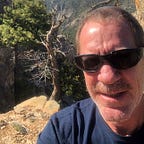How to Safely Put Out a Campfire
Based in Commerce City, Colorado, Alan Courtemanche is an electrician and electrical inspector with 43 years of professional experience. He joined Rockville, Maryland’s Standard Solar in 2015 and continues to serve the company as a senior quality assurance inspector. When he is not enforcing the National Electrical Code or managing both commercial and utility solar projects, Alan Courtemanche enjoys staying active through skiing and hiking.
Whether a hiker needs to rest over the course of a day hike or plans to spend one or more nights in the wilderness, a campfire can be a helpful tool for cooking and a convenient source of heat. Individuals should only build campfires in areas that permit them and should observe basic campfire safety precautions, such as building the fire away from low-hanging branches. Hikers should also take care when it comes to extinguishing fires.
To start, individuals should allow campfires to burn themselves out as much as possible, ideally to the point that all logs and kindling have been reduced completely to ash. At this point, hikers should pour as much water onto the fire as possible. Water should be poured over every square inch of the fire, not just the remaining red embers. If the ground hisses as water is poured, the area is still too hot.
In the absence of water, hikers can cover the embers with dirt and sand. The embers should be completely covered with dirt and hikers should use their digging instruments to remove branches and other debris from the area. Prior to fully burying the fire, they can use their shovels to stir the dirt and embers, releasing the remaining heat.
Finally, if the ground is too hot to touch, it is too hot to leave. Hikers should remain by the site of their fire until the ground has returned to a normal temperature and poses no threat of starting a forest fire.
